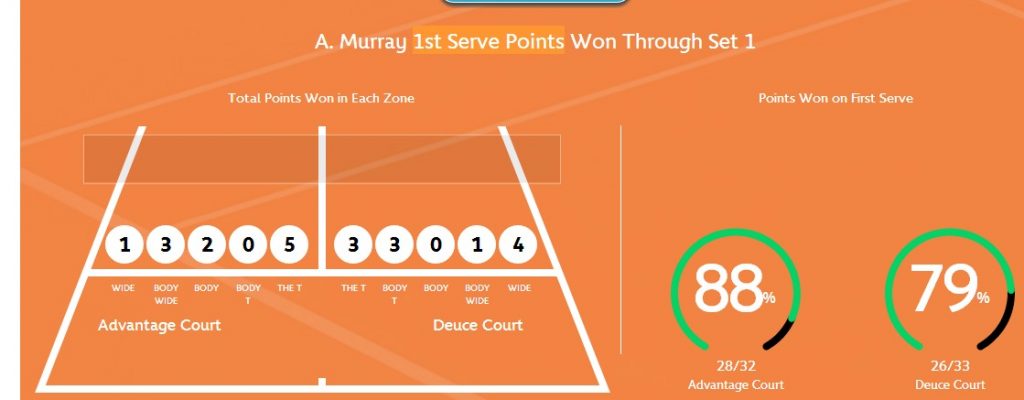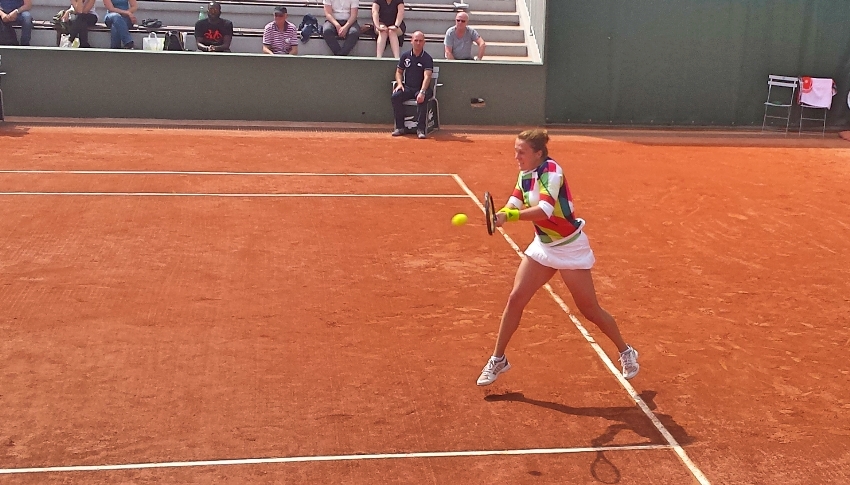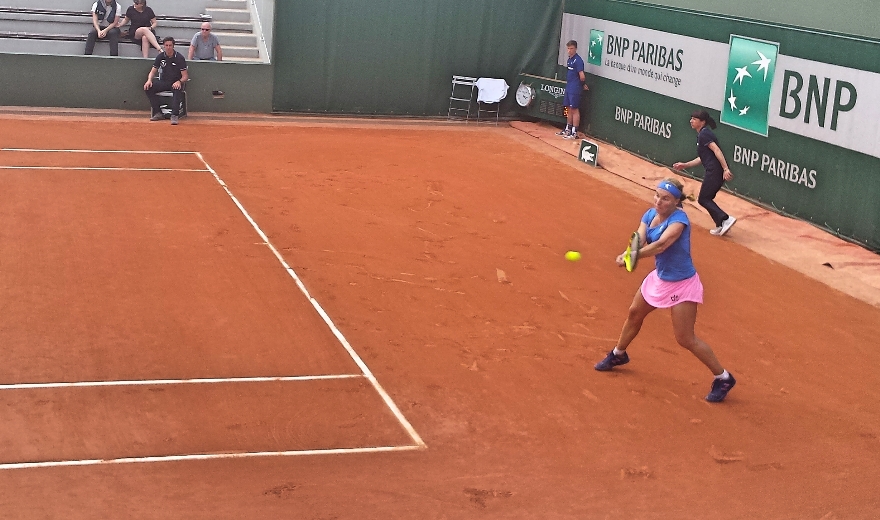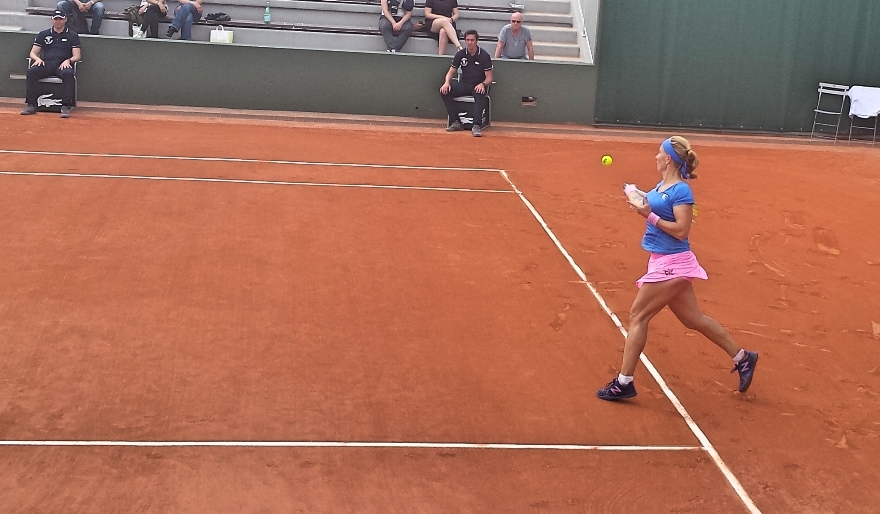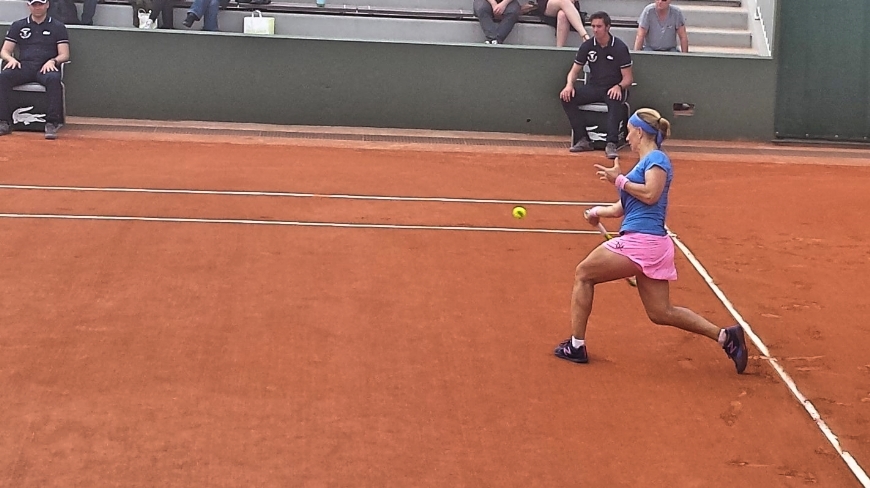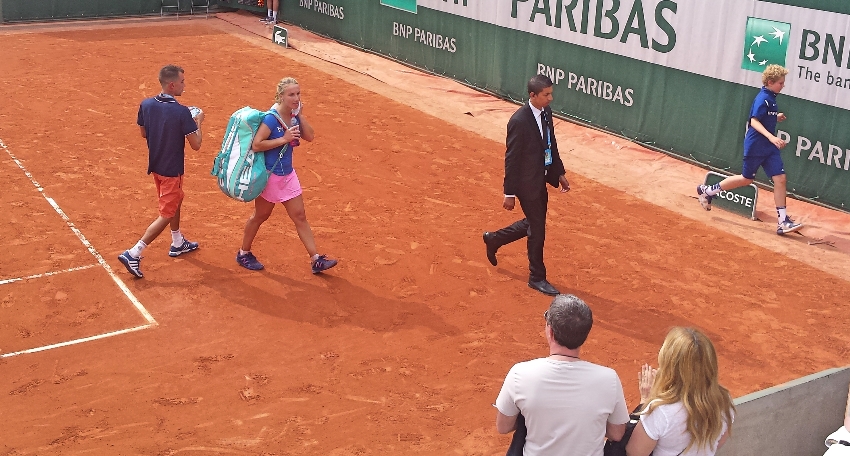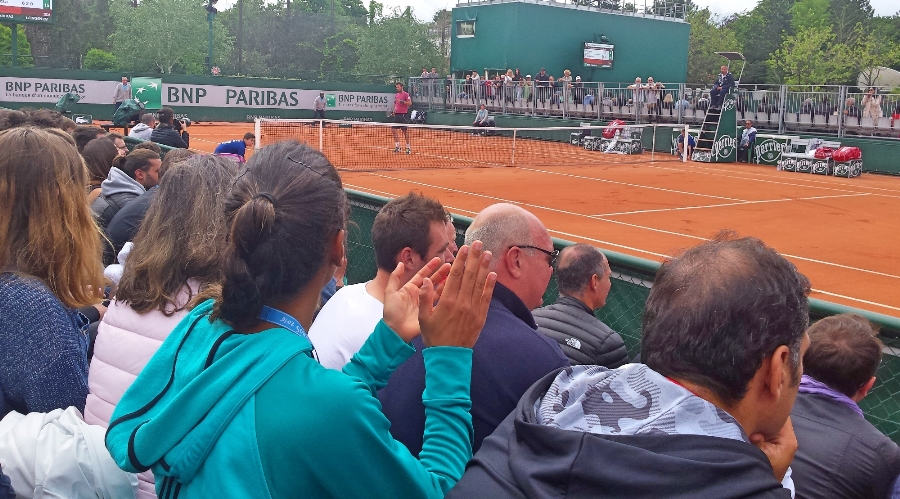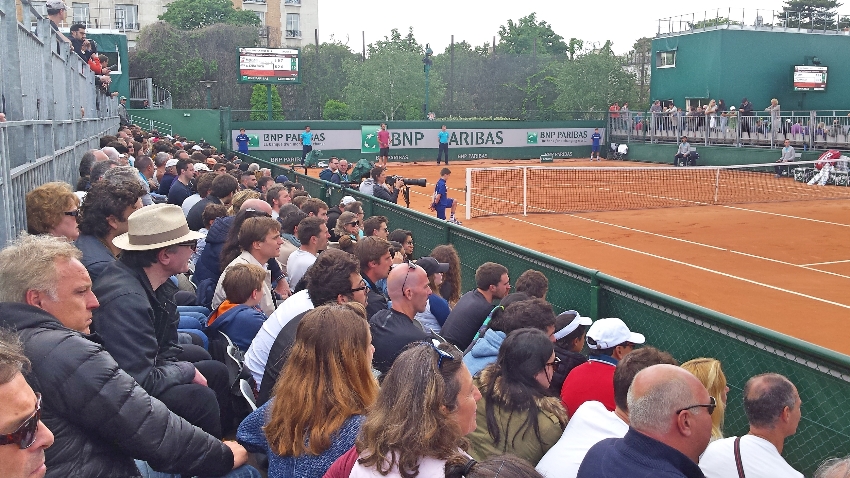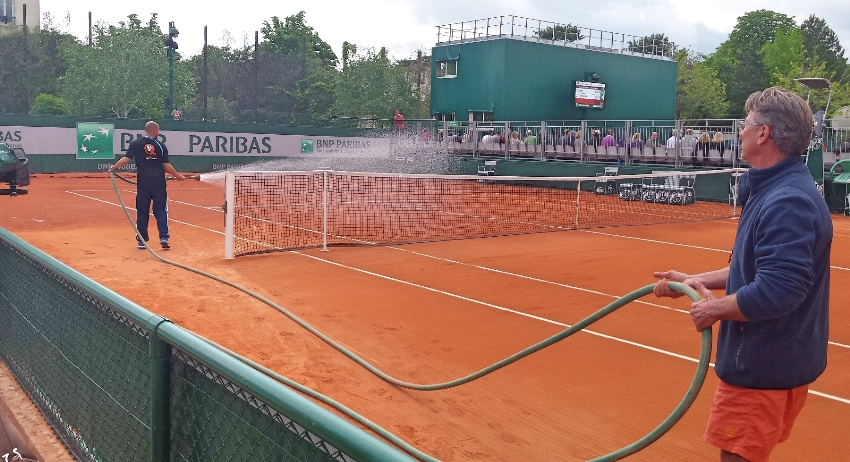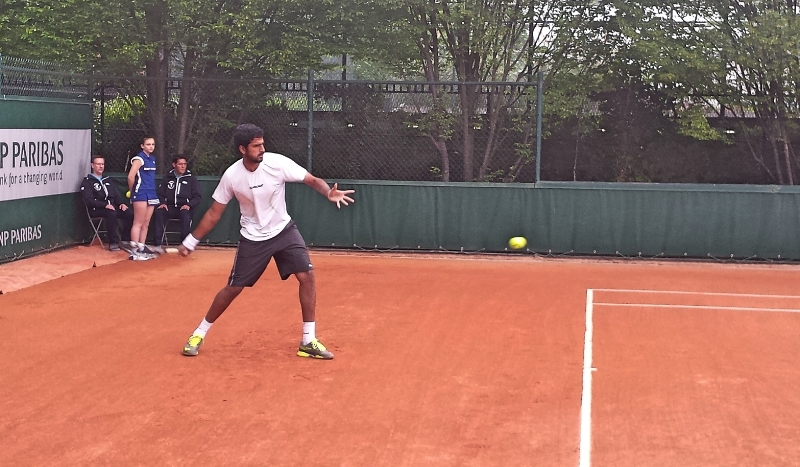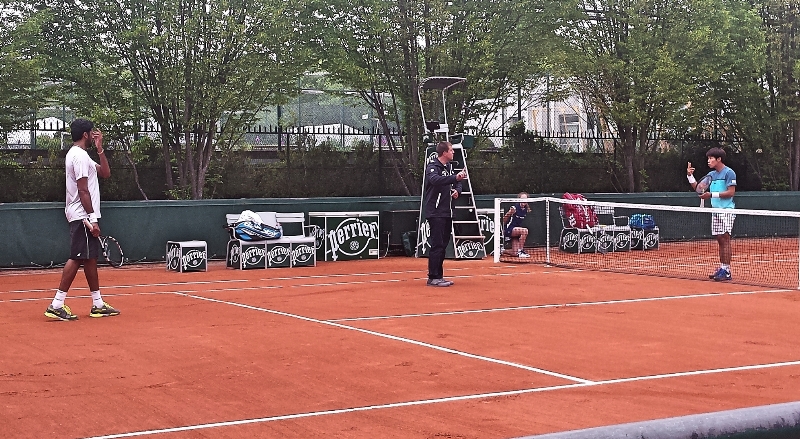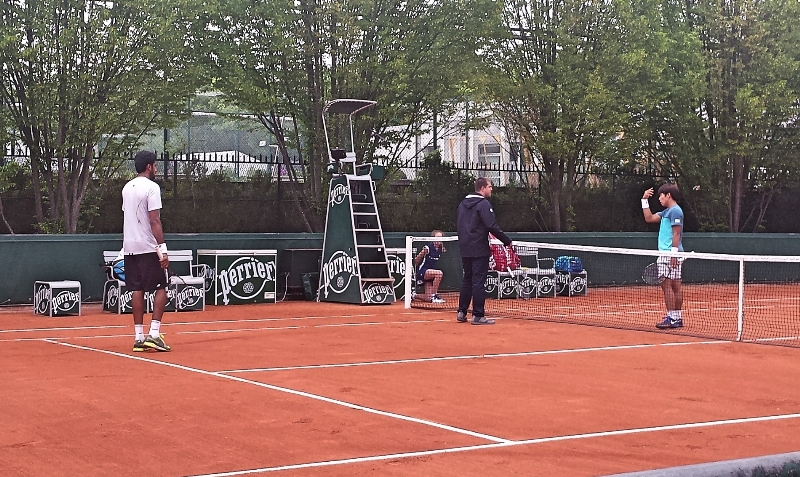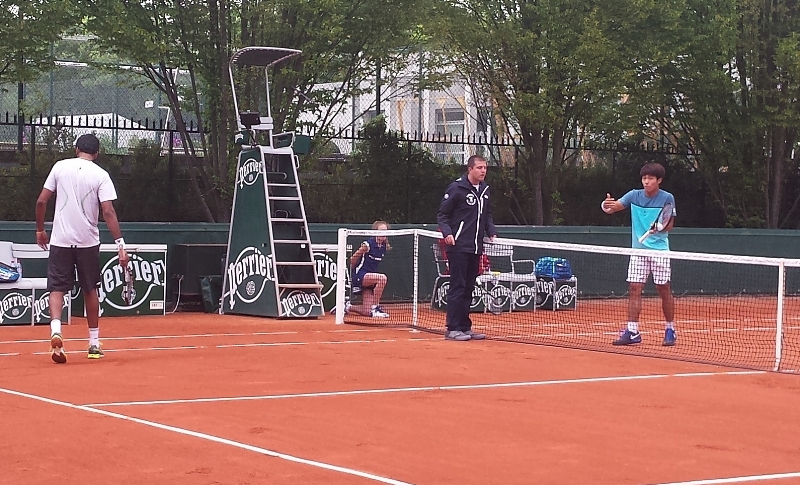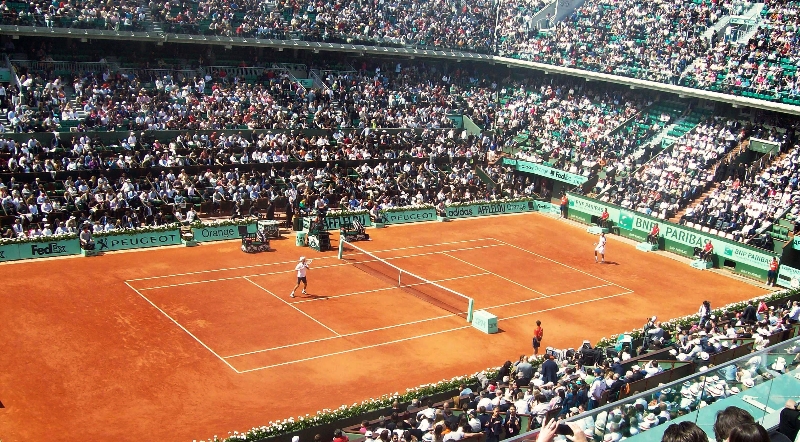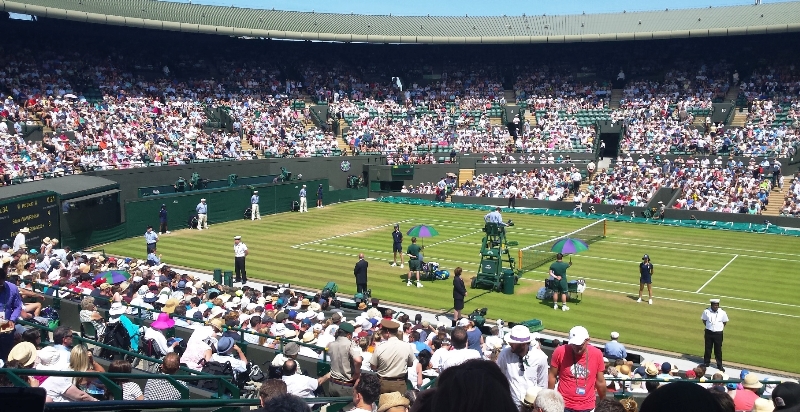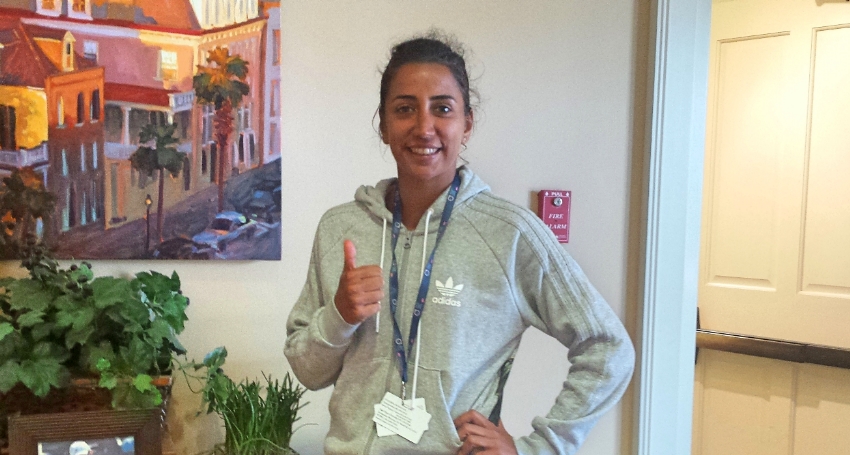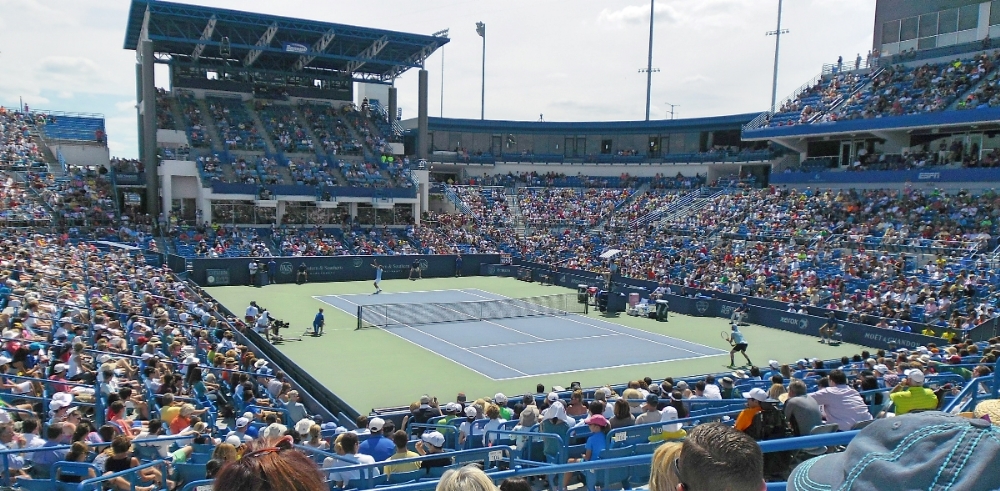In this piece, I will only analyze the first set of this match, more particularly, Andy Murray’s brilliant strategy on first serves, because the set (and consequently the match) was essentially decided on it. Andy Murray was never in real danger after winning the thrilling tiebreaker 11-9.
Details often distinguish great champions from other top players. Murray is an elite champion, John Isner is not. This is not to say that Isner is not a successful tennis player. His career speaks for itself. He has occasionally recorded wins against the elites and won numerous tournaments. But there is usually something that separates the likes of Murray, Nadal, Djokovic, and Federer from the likes of Isner, Tsonga, Ferrer, and Berdych. The elite champions find something where most other players are not able to, and use that something to their advantage in the way that others do not. In 2013, in the post-match press conference the quarterfinal match in which Tsonga squandered four match points and lost to Djokovic in 5 sets, he was asked why the French players never seemed to get over the hump against top players. Tsonga admitted that there was “something lacking” in them that did not in the elite players. What he said could easily be applied to what I noted above. In this particular encounter between Murray and Isner, the difference was the high-IQ strategy employed by Murray on first serves.
Until the tiebreaker, Isner never faced a break point and was closer to breaking his opponent’s serve than Murray was to breaking his. John had his first break point at 2-1 up. Before I get to that, let me bring up Murray’s strategy on his first serves. For the most part of the first set, he surprisingly served to Isner’s forehand, which is the American’s stronger side. Often able to hit an aggressive return on that side, Isner possesses the ability to put himself in a commanding position from the beginning of the point. One would think that his backhand return being weaker, most player would choose to hit the majority of their serves to that side.
Not Murray, not on that gloomy, drizzly, late Sunday afternoon.
It must have surprised Isner too because he was expecting, especially early in the set, more serves to his backhand, and thus, found himself off balance on some forehand ones. Unfortunately, I did not keep up with the numbers but I feel certain that Isner had to return Murray’s serve with his forehand more often than with his backhand. I do know however that Murray won more points off his first serves when serving wide to Isner’s forehand (meaning wide on the deuce side, to the “T” on the ad side) than to any other spot (body-forehand, body-center, body-backhand, wide backhand) in the service box.
Remember that this chart does not include the number of points in which Isner got the return in play. I would assume that the total number of serves would reflect a pattern of serving by Murray that favors Isner’s forehand returns.
With that said, now let’s get back to Isner’s first break point at 2-1 up, ad-out on Murray’s serve…
Murray chose to hit the serve to Isner’s backhand side, with a slight curve into his body. Isner missed the return out. Murray went back to mostly serving to Isner’s forehand (not to say that none of his serves went to the backhand, but certainly not the majority). Then came the second break point opportunity for the big American at 3-2, 30-40. This is where Murray got a bit lucky, at least at first. Isner returned back, got into the rally and hit a forehand on the line that would have put him into an advantageous position to win the point, except that the line judge called it out. The chair umpire corrected the call and asked for the point to be replayed. Murray hit an ace and got out of that jam. Yes, Isner got unlucky, but guess where Murray served that ace? Yes, wide to the Isner’s backhand side. After he held, Murray continued his pattern of mostly serving to Isner’s forehand side, whether aiming close to the body, or wide to the forehand.
There were no more break points and the tiebreaker was going to decide the first-set winner, a tiebreaker in which Murray, unlike the rest of the set, would relentlessly test Isner’s backhand side on returns. At 2-0 up, Andy aimed once again Isner’s backhand side and hit an ace to the “T.” At 3-2 up, he hit another big, flat serve to the outside corner, taking advantage of Isner’s short backhand return to put the next ball away for a winner. At 4-2 up, another hard, winning serve to the “T” ensued. In other words, after serving mostly to Isner’s strong side throughout the set, Murray was determined to test his opponent’s weaker side on crunch time.
After getting aced twice by Isner, at 5-4 up, Murray chose to serve to Isner’s forehand this time, probably trying to avoid being predictable, and he paid the price. Isner got the return back and Andy eventually missed. At 5-5, he had to serve a second serve to which Isner replied with an aggressive return and the American held a set point on his serve at 6-5. This was the only point where one can truly say that the American should have won, holding the set on his racket. He couldn’t deliver the big ace, as he so often does, and Murray ended up passing Isner at the net to get back to 6-6.
Later at 6-7, down another set point but this time on his serve, Murray served into Isner’s body, but forcing him to hit a backhand. Isner missed the return and they were at 7-7. As one might expect by now, it was another hard first serve to Isner’s backhand. It resulted in another backhand return error by the big guy, and now Murray held a set point at 8-7. Isner held both of his service points and went up 9-8 earning his third set point. Andy attacked Isner’s backhand in the rally and forced him into an error. At 9-9, Andy served big to Isner’s backhand (yes… again!) and saw the American’s return go in the net. He won the next point on a baseline error by John and took the first set 7-6.
At the end of it all, Murray reversed his service pattern, almost completely, when it mattered the most. One may question the wisdom of playing to your opponent’s strength during most of the set, but there is no doubt that it was planned so by Murray and his team, to keep Isner off balance when it truly counted. It is possible to work your opponent’s weak side so much that, by the time crucial points come about, they have found a way to deal with it and gained confidence. Furthermore, they expect you to test their weaknesses.
Andy did the opposite. He served to Isner’s stronger side for almost the whole set. That did not allow John to favor one side or the other, or to begin expecting most serves to his weak side. But when faced with break points earlier in the set, and when the tiebreaker began to determine the outcome of the set, Murray systematically went back to his opponent’s weaker side that did not get worked much previously. It was the difference, that “little something,” in the set that ultimately tilted the balance in the Brit’s favor. Not giving Isner the luxury of making an educated guess throughout the set on which side he would have to return was also why Murray won 80,6% of his first-serve points (25/31).
As it turned out, that first set went a long way to decide the winner of the match. Now, Murray is in the quarterfinals, preparing for an encounter with the local favorite, and the in-form, Richard Gasquet, while Isner will not be back to Roland Garros until next year. Murray had a terrific plan on his first serves, one that he executed to perfection. I am sure it was only a segment of his larger game plan to defeat the 17th-ranked American, and there is no denying that he did come close to losing the set. Ultimately, however, those are the intangibles that somehow seem to work in the favor of the elite players, and on Suzanne Lenglen court yesterday, that one particular intangible lifted the second-ranked player in the world to the next round of a Major.

